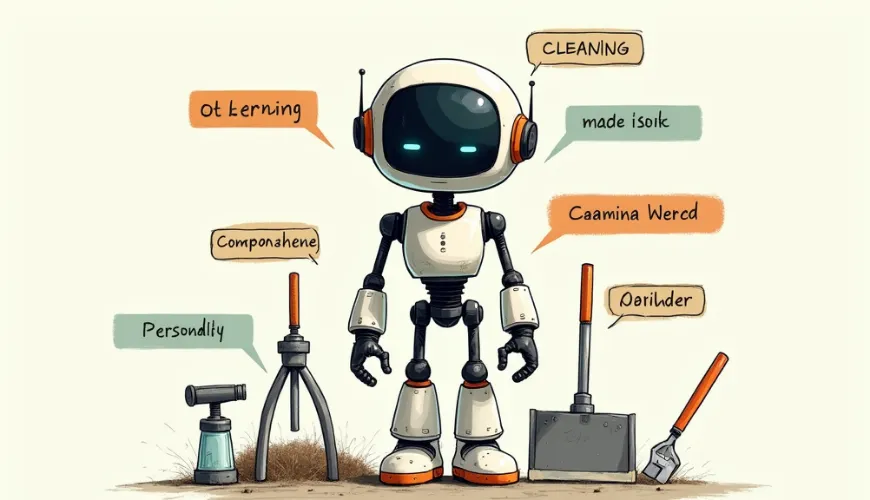Understanding Undetectable AI: Making AI-Generated Text Fly Under the Radar
AI-generated content is everywhere—from blog posts and essays to social media captions and business emails. With the rise of tools like ChatGPT, Claude, Mistral, and Grok, it's easier than ever to produce high-quality content in seconds. However, this convenience has sparked growing concerns, especially in academic, publishing, and professional settings, about whether AI-generated content can be accurately detected and how to make such content appear more human-written.
In this guide, we'll explore how to make AI-generated text undetectable, why AI detectors exist, how they work, and how tools like Claila make the process of rewriting AI content seamless and effective.
Why Make AI Text Undetectable?
Before exploring specific techniques, it's essential to grasp why someone might want AI-generated content to be undetectable. In academic settings, the primary concern is often academic integrity. Students may rely on AI tools for assistance but still aim to meet institutional guidelines that prohibit or limit such help.
In the realm of publishing and digital marketing, content originality plays a crucial role. Writers, bloggers, and marketers frequently seek to ensure their content passes plagiarism detectors and AI-detection systems to meet editorial standards and enhance credibility.
When it comes to professional environments, job seekers might use AI to craft compelling resumes or cover letters. However, these documents can be flagged as non-original, potentially harming their application efforts. Ensuring these materials appear authentic is therefore a common motivation.
Lastly, creators concerned about platform visibility may strive to make their AI-generated content indistinguishable from human-produced work. This is because some platforms suppress or demote AI-written content, impacting reach and engagement for those using automation tools.
In each case, the goal is not to deceive maliciously, but to ensure the content doesn't get unfairly penalized or rejected simply because it was aided by an AI assistant.
What Are AI Detectors?
AI detectors—or AI checkers—are tools designed to identify whether a piece of content was written by an AI language model. Some popular ones include:
These tools analyze text based on several factors like sentence predictability, structure uniformity, and perplexity (a measure of how "surprised" a model is by a piece of text). The more predictable the language, the more likely it's considered AI-written.
Can AI Detectors Be Fooled?
Yes, but with caveats. Most AI detectors are not 100% accurate and can produce false positives or negatives. Subtle rewriting and rephrasing of AI-generated content can significantly reduce the chances of detection. That's where tools like Claila come in.
How Claila Helps You Reword Content to Be Undetectable
Claila is an AI productivity suite that includes access to top-tier language models like ChatGPT, Claude, Mistral, and Grok. These models can be used to rewrite content in a more human-like tone, making it harder for AI detectors to flag them. What's even better is that Claila allows you to use these tools for free.
Here's how Claila stands out:
- Multi-model access: Choose from different AI models based on your rewriting needs.
- Free AI chat: Use the chat to rewrite or paraphrase text effortlessly.
- Custom prompt crafting: Engage with the AI using specific instructions to get natural, undetectable results.
How to Make AI Text Undetectable: Step-by-Step
Using Claila or similar tools, you can easily make AI-generated content fly under the radar of most detectors. Here's a practical method:
- Generate your initial content using any AI model.
- Run it through an AI detector to see if it's flagged.
- Copy the flagged portions or the entire text.
- Go to Claila, select an AI model you prefer (e.g., Claude for nuanced tone).
- Use a custom prompt to rewrite the content.
- Re-check the rewritten text using AI detection tools.
Example Prompt to Rewrite AI-Generated Text
Use this prompt with Claila's Chat feature:
Prompt:
Please rewrite the following paragraph to sound more natural and human-written. Avoid robotic phrasing, vary sentence structure, and add a casual tone without changing the meaning. Keep it engaging and make it less likely to be flagged by AI detectors.
After the prompt, paste your original paragraph.
Example in Action
Original AI Text:
Artificial Intelligence is revolutionizing the way people work by automating repetitive tasks and increasing productivity across different industries.
Rewritten by Claila with ChatGPT:
AI is completely changing how we get things done. From taking care of the boring stuff to helping teams be more efficient, it's becoming a game-changer in just about every field.
The revised version sounds more conversational, includes contractions, and varies the sentence structure—traits that typically fool AI detection tools.
Tips to Make AI-Generated Text Undetectable
To create undetectable AI-generated content, it is crucial to make the writing feel genuinely human. One highly effective strategy is to incorporate personal anecdotes or opinions, which introduces a level of unpredictability and nuance that AI often struggles to mimic. These elements reflect human experiences and viewpoints, making the content more relatable and less mechanical.
Another useful technique involves weaving idioms, slang, or region-specific phrases into the text. Since AI models tend to steer clear of informal language, using such expressions helps the content feel more natural and grounded in a human voice. This approach adds authenticity and stylistic variation.
Additionally, human writers rarely follow perfect grammatical structures. Breaking up long or complex sentences into shorter, more conversational ones can greatly enhance the realism of the text. This mimics the irregular patterns commonly found in natural human writing.
Finally, it's essential to pay close attention to tone and punctuation. While AI-generated content can be grammatically correct, it may lack the subtle emotional cues conveyed through tone. Manually adjusting these elements, or instructing the AI clearly in the prompt, ensures the text better aligns with human writing tendencies (references available upon request).
What AI Detectors Look For
Understanding how these tools operate is crucial, as it helps you avoid red flags when generating or reviewing content. AI detectors rely on specific linguistic patterns to assess whether a piece of text might have been automatically generated.
One key metric used is perplexity. This measures how predictable a sentence is—text with low perplexity is considered highly predictable, which often signals AI authorship. In contrast, human writing tends to be more varied in structure and word usage, making it less predictable.
Another factor is burstiness. Human-written content typically features a mix of short and long sentences, creating a rhythm and flow that feels natural. AI-generated text, however, often maintains a uniform sentence length, which can be a giveaway.
Finally, semantic richness plays a role in detection. Texts that lack nuanced or abstract thought may suggest they were machine-generated. Human writers usually include unique perspectives, subtle implications, and layered meanings in their writing.
By adjusting elements like perplexity, burstiness, and semantic richness in your text, you can make it more difficult for detection algorithms to confidently identify content as AI-generated.
Real-Life Applications Where AI Rewriting Matters
A university student working on a biology essay initially uses Grok to generate content, which unfortunately results in 80% of the essay being flagged by an AI detection tool. To resolve this, the student turns to Claila's Claude model to rewrite the problematic sections. By designing a prompt that encourages the inclusion of personal insights and varied sentence structures, the student successfully transforms the flagged content into a version that passes the AI detection.
In the realm of marketing, a small business owner relies on Mistral through Claila to craft product descriptions. However, they aim to post this content on platforms that restrict overtly AI-generated text. To address this, they use Claila to rewrite the descriptions with a prompt focused on adding humor and storytelling elements, which helps the content appear more authentic and manually composed.
For freelance writing, a content creator uses ChatGPT to produce an initial draft of a blog post. To meet the standards of clients who check for AI-generated content, the writer employs Claila's rewriting tools. The rephrased version, created by using a prompt that infuses rhetorical questions and a conversational tone, is more engaging and avoids detection as AI-produced, thus meeting client expectations.
Benefits of Using Claila for AI Text Rewriting
- User-friendly interface: Even beginners can get great results.
- Choice of models: Selecting between ChatGPT, Claude, Mistral, and Grok gives you flexibility in tone and style.
- Free to use: Unlike many other AI content platforms that charge for full access.
- Productivity-focused: Not just rewriting—Claila offers a suite of tools including image generation and advanced editing.
Comparing Rewriting with Claila vs. Manual Editing
While you can technically rewrite AI text manually, it's time-consuming and often less effective. Claila handles the heavy lifting while giving you control over tone, structure, and content meaning.
Manual rewriting:
- Time-intensive
- Prone to errors or unnatural phrasing
- Requires deep knowledge of writing styles
Claila rewriting:
- Instant results
- High-quality, readable output
- Customizable with prompt guidance
Final Checklist to Make AI-Generated Text Undetectable
Before you hit publish or submit, run through this quick list:
- [ ] Have I varied sentence lengths and structure?
- [ ] Does the text include personal touches or opinions?
- [ ] Have I avoided overly formal or robotic language?
- [ ] Have I checked the output using AI detection tools?
- [ ] Did I use Claila to rewrite or rephrase sensitive sections?
Following this checklist increases your chances of passing undetected, especially when combined with Claila's powerful tools.
Keep It Human, Keep It Smart
AI is a powerful assistant, but the key to using it effectively is blending its efficiency with the authentic voice of human writing. Platforms like Claila give you access to world-class language models that can make this fusion seamless. Whether you're a student, a marketer, or a freelance writer, learning how to make AI-generated text undetectable opens up a world of possibilities—without compromising quality or originality.
For anyone serious about crafting smarter content, Claila isn't just a tool—it's your creative co-pilot.



